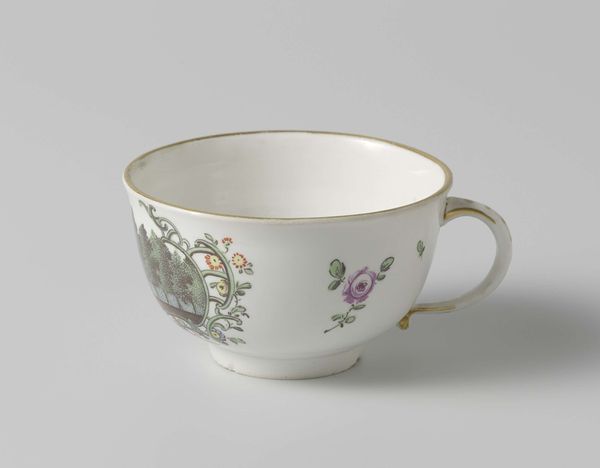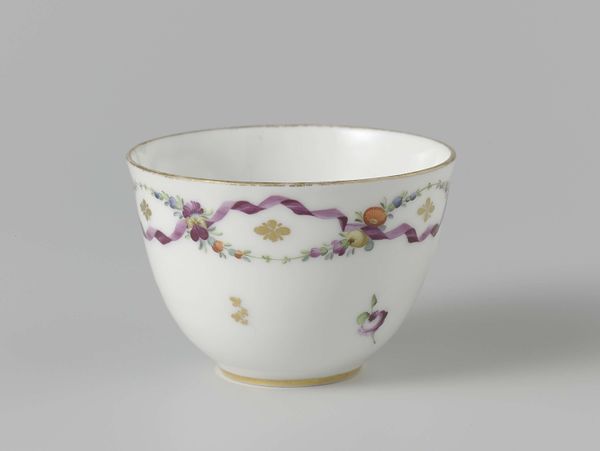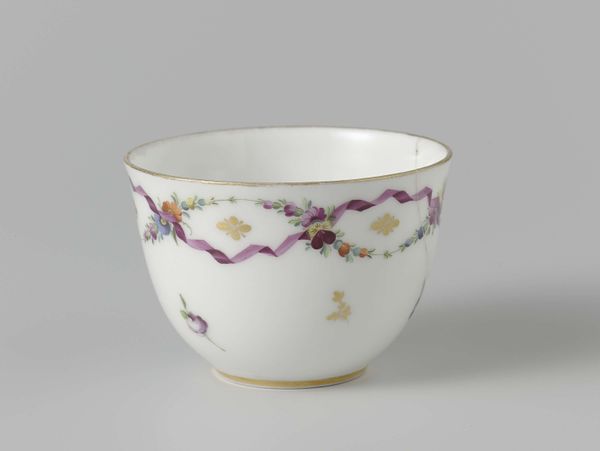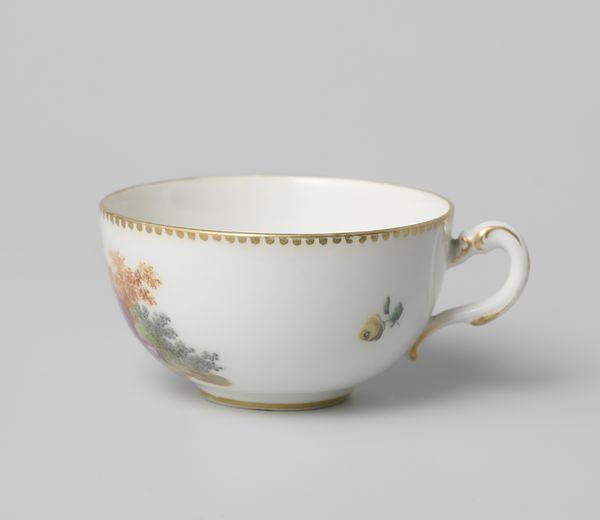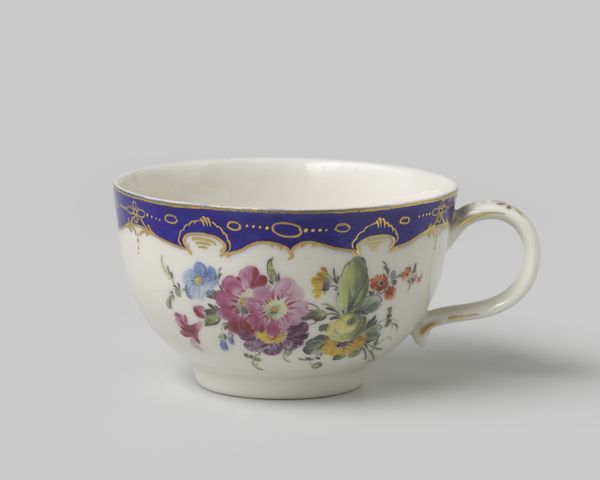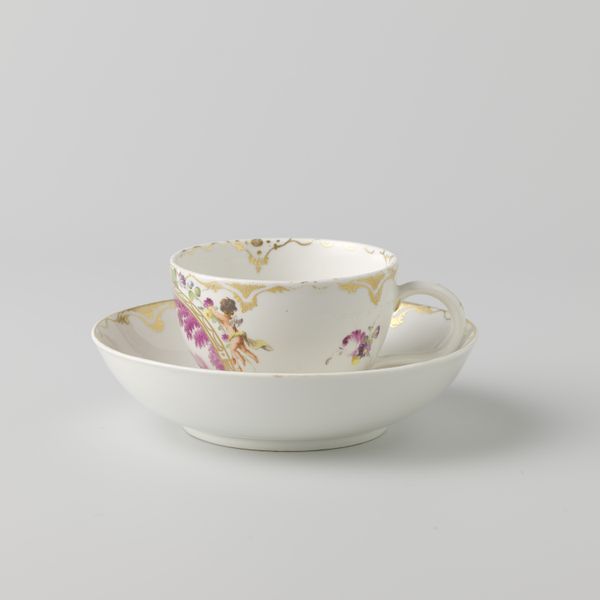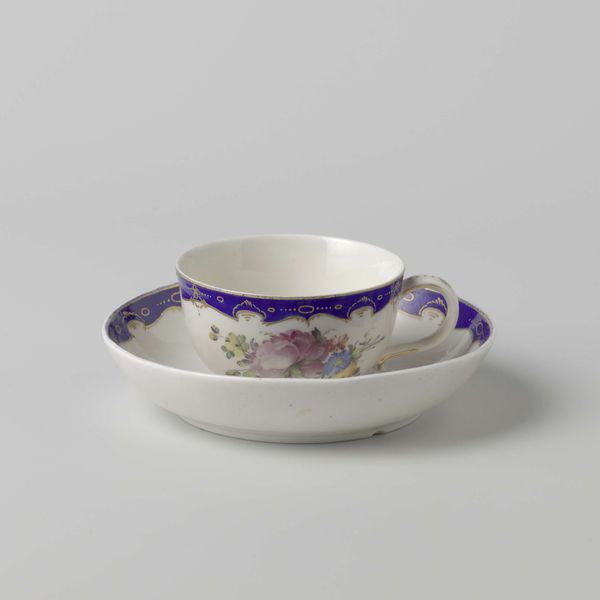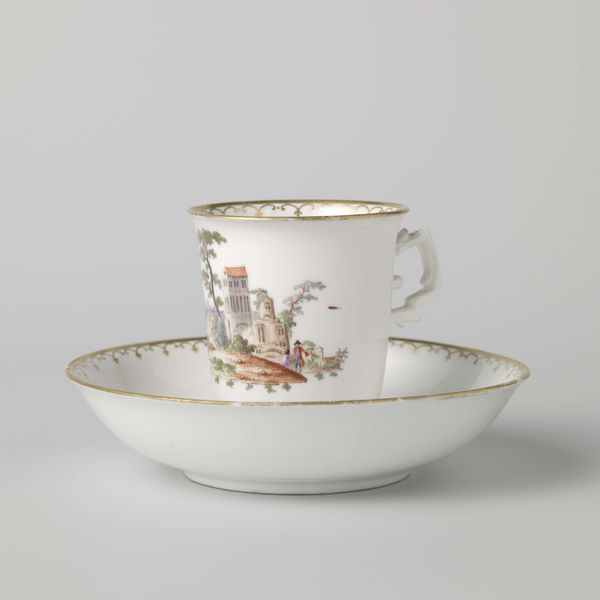
Dimensions: height 4.7 cm, diameter 8 cm, diameter 3.5 cm, width 9.7 cm
Copyright: Rijks Museum: Open Domain
Editor: Here we have a porcelain cup, made between 1763 and 1791, adorned with floral scrolls and ribbons. It feels so delicate. What story does its materiality tell? Curator: The key question is, how was this cup produced and consumed? Porcelain represents not only delicate artistry but also a complex web of labor and trade. Consider the mining of the raw materials, the specialized labor involved in shaping and firing the clay, and the artistry in the painted decorations. The floral motifs weren't just decorative choices, but symbols reflecting consumer desire and societal values. Editor: So, the flowers aren’t just pretty, they tell a story about consumer culture at the time? Curator: Precisely. Think about the process; the mold-making, the kilns… Porcelain’s global trade also hints at broader power structures. Was the cup made locally, or were the raw materials sourced internationally, perhaps from colonized regions? These material elements embed historical power dynamics within the art object. Editor: It’s amazing to consider how much of the 18th century is captured within a teacup. Does understanding that process influence how we should value this object? Curator: It transforms it. We see past mere aesthetics to examine the systems and power structures behind production and distribution, reframing our understanding of value. Editor: That’s given me a totally different perspective. Now it’s much more than just a beautiful cup. Curator: Exactly. It becomes a vessel filled with the complexities of history and production.
Comments
No comments
Be the first to comment and join the conversation on the ultimate creative platform.
